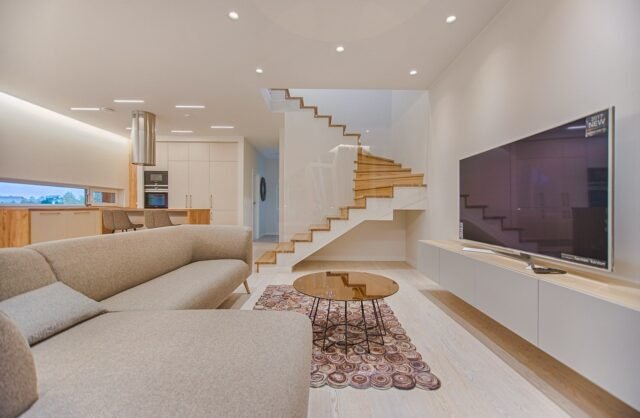Are you thinking of making a gorgeous addition to your smart home bathroom? There are several unique bathtubs you could fit in. But the finest – the very best will be a clawfoot bathtub.
Apart from this being one of the most fashionable choices you can make for your home, having a clawfoot tub is very therapeutic. Here are some reasons why these fabulous bathtubs are great for your smart home.
Contents
Why Choose a Clawfoot Tub?
First off, clawfoot tubs are classic. Since their creation in the 19th century, designers and builders have used them as expressions of genius and craftsmanship. Vintage clawfoot bathtubs are pieces that could easily cost several thousands of dollars.
Aside from their unmistakable elegance, clawfoot tubs are an excellent way to relax and wash up simultaneously. So it’s easy to see why anyone would want them as a centerpiece or an integral part of their bathroom.
It’s all about beauty in functionality with these fantastic bathroom pieces. They are a fine example of how art embraces engineering.
What to Know When Choosing a Clawfoot Tub
Now, consider the following tips when choosing a clawfoot tub. First, get to know what the deal-breakers are and what works.
Placement
The freestanding style of clawfoot tubs is their freestanding design. This factor allows for a lot of design freedom for placement in your bathroom. Thus, you can install these tubs anywhere. If your bathroom is large enough, you could even make the tub the centerpiece. And if you have a small one, the tub could stay in the oddest corner and look natural.
Now, since clawfoot tubs are often larger than the standard built-in bathtubs, swapping isn’t going to be straightforward. Besides, cramming a clawfoot where the old standard bathtub stayed would be uncomfortable and ugly.
Plumbing
Just as iconic as the clawfoot bathtubs are the plumbing for them. And like the tubs themselves, the fillers can be placed anywhere in the bathroom. But don’t install them on the wall if you want more flexibility.
The issue with this is that it is a lot more expensive to do than for a typical bathtub. The reason is the difficulty. Installing a clawfoot anywhere in your bathroom means moving water supply and drainage lines to where you want them. In addition, you would break up walls and floors, meaning extra cost.
Shower
Clawfoot tubs aren’t traditionally for showers. But these days, you can have a handheld shower installed with your tub. This can work very well for people who want to have the convenience of a light wash without a bath.
But adding a shower to the tub is also expensive and challenging. A standup shower requires an oval-shaped curtain rod surrounding the tub. The curtain won’t stop all the leaks, though. Also, you will need a freestanding shower attachment for a freestanding clawfoot.
These are all more expensive than standard types.
Material
Artisans made the original clawfoot designs from cast iron, porcelain, or both. These days, they make tubs with all kinds of materials, from acrylic tubs to powder-coated cast iron.
Think about what material you’d like for your clawfoot tub. You can decide to paint your cast iron clawfoot tub to match your bathroom. But they can be difficult to maintain. They are extremely heavy, even without water in them. Please avoid using them on a second story. But they hold heat well after much effort to warm the cold iron.
Acrylic clawfoot tubs are easily installed, warm to touch, and lightweight. But they don’t last as long as cast-iron ones. Also, they don’t hold heat well.
Modern types are available today, like fiberglass clawfoot tubs and other composite material tubs. Vintage styling is also available with these modern materials.
Cleaning
Clawfoot tubs fitted with a handheld shower are easier to clean than those without one. The hand shower allows you to aim water to rinse areas you are cleaning. You can also wash and rinse large things, like your dog, easier.
You may find cleaning around your clawfoot tub pretty challenging. That’s one reason they went out of fashion. It becomes complicated to clean if the tub is against a wall. Also, cleaning under the tub can be very hard.
Porcelain clawfoot tubs are easily stained, scratched, or chipped. So you have to be very careful around one.
Types of Clawfoot Tubs
There are different types of clawfoot tub designs in the market. When looking to get one, consider these five main types.
Classic/ Flat Rim Clawfoot Tub
Flat rims are the most common clawfoot tubs. They have a faucet and showerhead at the head of the tub. The tub’s rim is level and straight, with a curled edge.
Double Ended Clawfoot Tub
These have a level rim and rounded edge like the classic. The difference is that the faucet and showerhead are on the lengthwise side of the tub.
Single Slipper Clawfoot Tub
The single slipper types have a raised edge with the faucet and showerhead usually placed on the lower edge. The shorter edge is often the same height as a regular clawfoot’s edge.
Double Slipper Clawfoot Tub
Similar but unlike the single slipper, this type has two raised edges. The faucet and showerhead are placed lengthwise by the tub.
The Pedestal Tub
This tub doesn’t have any clawfoot but is classified among clawfoot tubs. It has a solid base all around. The top-end can feature any type of edge mentioned above.
Clawfoot Tub Feet Types
There are various feet types for clawfoot bathtubs. Designs vary from vintage to modern. Naturally, designers make a statement with the feet for these tubs. But there are some common motifs manufacturers follow.
- Ball/Cannonball – These types feature rounded, mostly spherical feet.
- Paw/Claw – These are inspired by animals’ paws or birds’ feet like lions, bears, eagles, etc.
- Ball & Claw – This is a merger of the ball and paw/claw types. The paw or clawed feet are designed to be gripping the ball.
- Armada – This type is designed squarer and flatter. It is minimalist but still exquisite.
- Modern – These types feature various themes sourced from modern art, fashion, science, and engineering. They can be dynamic, colorful, or provoking. Examples are human feet, lady’s high heels, wild shapes, or simple forms.
Conclusion
We have discussed a wide array of issues concerning clawfoot tubs. Of course, there are some challenges with installing these tubs, including expenses. But when you set yours up, it will be a thing of absolute beauty.




